Discover the breathtaking beauty of National Parks Vietnam and learn about their unique features, wildlife, and conservation efforts.
Introduction
Vietnam, a country renowned for its stunning landscapes and rich biodiversity, is home to a number of national parks that offer a glimpse into the natural beauty and ecological significance of the region. These protected areas, known collectively as the National Parks Vietnam, are vital for preserving the environment, protecting wildlife, and promoting sustainable tourism. In this article,
YESD’s guide will explore the top National Parks Vietnam, their unique features, and the efforts made to conserve these natural treasures.
Overview of National Parks Vietnam
The establishment of national parks in Vietnam began in the mid-20th century, with Cuc Phuong National Park being the first, established in 1962. Since then, the network of protected areas has expanded significantly, reflecting the country’s commitment to conservation. National Parks Vietnam are spread across the country, from the northern highlands to the southern islands. Each park boasts unique landscapes, ranging from dense forests and limestone karsts to coastal mangroves and coral reefs.
National Parks Vietnam is managed by the Vietnam Administration of Forestry, under the Ministry of Agriculture and Rural Development. Strict regulations are in place to protect these areas from illegal activities and ensure sustainable use of resources.
The Importance of National Parks Vietnam
Environmental Preservation
National Parks Vietnam plays a crucial role in maintaining ecological balance and preserving natural habitats. They provide a sanctuary for numerous species of flora and fauna, ensuring that these ecosystems remain intact for future generations.
Biodiversity Conservation
National Parks Vietnam are hotspots of biodiversity, home to a wide variety of plant and animal species, many of which are endemic or threatened. Conservation efforts within these parks help protect these species from extinction and maintain genetic diversity.
Cultural Heritage Protection
Many National Parks Vietnam also serve as cultural heritage sites, preserving historical landmarks and traditional practices. They provide an opportunity to learn about the cultural and historical significance of the region, adding depth to the natural beauty.
Tourism Development
National Parks Vietnam are major attractions for both domestic and international tourists. They offer a range of recreational activities, from hiking and bird watching to exploring caves and waterfalls. Sustainable tourism practices in these national parks Vietnam contribute to the local economy and promote environmental awareness.
Top National Parks in Vietnam
1. Phong Nha-Ke Bang National Park

Phong Nha-Ke Bang is located in central Vietnam, near the border with Laos. The park covers an area of over 123,000 hectares and features a complex karst landscape with numerous caves and underground rivers. The park is famous for its extensive cave systems, including Phong Nha Cave, Paradise Cave, and the world’s largest cave, Son Doong. These caves are adorned with impressive stalactites and stalagmites, creating a surreal underground landscape.
Phong Nha-Ke Bang is home to a diverse range of species, including many rare and endangered animals like the saola, langurs, and various bat species. The park’s dense forests and river valleys provide critical habitats for these species. Visitors to Phong Nha-Ke Bang can explore the caves, hike through the jungle, and enjoy boat trips on the Son River. The park also offers opportunities for bird watching, rock climbing, and discovering the local culture in nearby villages.
2. Cat Ba National Park
 Cat Ba National Park
Cat Ba National Park is located on Cat Ba Island in Hai Phong City. The park covers an area of over 15,000 hectares and includes both terrestrial and marine ecosystems. This park is characterized by its rugged limestone mountains, dense forests, and diverse marine habitats. It is part of the Cat Ba Archipelago Biosphere Reserve, recognized for its ecological importance.
Cat Ba is home to the critically endangered Cat Ba langur, one of the rarest primates in the world. The park also hosts a variety of other wildlife, including deer, civets, and numerous bird species. You can enjoy hiking, kayaking, and exploring the island’s caves and beaches when coming to this National Parks Vietnam. The park offers stunning views from its mountain peaks and opportunities for snorkeling and diving in its clear waters.
3. Ba Be National Park
 Ba Be National Park
Ba Be National Park is located in Bac Kan Province, in northern Vietnam. The park is centered around Ba Be Lake, the largest natural freshwater lake in Vietnam, surrounded by limestone mountains and forests.
Ba Be Lake is the highlight of the park, offering serene waters and stunning scenery. The park also features waterfalls, caves, and traditional Tay ethnic villages.
Ba Be is home to a variety of wildlife, including several species of birds, butterflies, and fish. The park’s forests support mammals like macaques, bears, and the endangered Tonkin snub-nosed monkey. Come and take boat trips on the lake, hike through the forest trails, and visit the local villages to experience the Tay culture. The park also offers opportunities for bird watching and exploring caves like Puong Cave.
4. Cuc Phuong National Park
 Cuc Phuong National Park
Cuc Phuong National Park is located in Ninh Binh Province, about 120 kilometers southwest of Hanoi. The park covers an area of over 22,000 hectares and features a mix of limestone mountains, valleys, and dense forests. Cuc Phuong is known for its ancient trees, some of which are over 1,000 years old. The park also has significant archaeological sites, including the Cave of Prehistoric Man, with evidence of human habitation dating back thousands of years.
As a biodiversity hotspot, home to a wide variety of plant and animal species, Cuc Phuong Nation Park hosts several endangered species, including the Delacour’s langur, and is an important site for bird conservation. With numerous hiking trails, customers can also visit the Endangered Primate Rescue Center, and discover the ancient trees and cultural sites. The park also offers opportunities for bird watching and wildlife spotting.
5. Bach Ma National Park

Bach Ma National Park is located in Thua Thien Hue Province, in central Vietnam. The park covers an area of over 37,000 hectares and includes a range of habitats from coastal lagoons to high mountain peaks. The park is known for its scenic beauty, featuring lush forests, waterfalls, and panoramic views from its highest peaks. It is also home to several historical French colonial buildings.
Bach Ma is rich in biodiversity, with over 1,400 species of plants and 1,500 species of animals, including many rare and endangered species. The park is an important habitat for mammals, birds, and amphibians. Visitors to Bach Ma can enjoy hiking to the park’s many waterfalls, exploring its trails, and taking in the views from the summit. The park also offers opportunities for bird watching and learning about its historical sites.
6. Con Dao National Park

Con Dao National Park is located on the Con Dao Archipelago, off the southern coast of Vietnam. The park includes both terrestrial and marine protected areas, covering a total area of over 15,000 hectares. The park is renowned for its pristine beaches, coral reefs, and nesting sites for sea turtles. It is also historically significant, with remnants of French colonial prisons.
Con Dao is an important nesting site for green sea turtles and hawksbill turtles. The park’s marine environment supports a variety of coral species, fish, and marine invertebrates. Here, you can enjoy snorkeling and diving in the clear waters, watching sea turtles during nesting season, and exploring the island’s beaches and historical sites.
7. Cat Tien National Park

Cat Tien National Park is located in southern Vietnam, spanning the provinces of Dong Nai, Lam Dong, and Binh Phuoc. The park covers an area of over 71,000 hectares and features a mix of lowland tropical forests, wetlands, and rivers. The park is known for its rich biodiversity and significant conservation efforts. It includes the Cat Loc sector, a protected area for the critically endangered Javan rhinoceros (now extinct in the park).
This park is home to a diverse range of species, including elephants, gibbons, and crocodiles. The park is also an important site for bird conservation, with over 350 bird species recorded. This park can enjoy jungle trekking, wildlife watching, and boat trips on the Dong Nai River. Visitors can book guided tours and educational programs about its conservation efforts.
Ecotourism
- Sustainable Tourism Practices: Ecotourism in Vietnam’s national parks focuses on minimizing environmental impact and promoting conservation. Practices include limiting visitor numbers, using eco-friendly facilities, and supporting local communities.
- Community Involvement: Local communities play a crucial role in ecotourism, offering homestays, guiding services, and cultural experiences. This involvement ensures that tourism benefits the local economy and encourages conservation.
- Economic Benefits: Ecotourism generates income for local communities and funds for conservation projects. It also raises awareness about environmental issues and the importance of protecting natural areas.
Challenges Facing
- Environmental Threats: National parks in Vietnam face threats from deforestation, habitat destruction, and pollution. These activities degrade the environment and threaten wildlife.
- Illegal Activities: Illegal logging, poaching, and wildlife trafficking are significant challenges. These activities deplete natural resources and endanger species.
- Climate Change Impacts: Climate change affects national parks through rising temperatures, changing precipitation patterns, and extreme weather events. These changes impact ecosystems and species’ survival.
- Resource Management: Effective management of national parks requires adequate funding, skilled personnel, and community support. Ensuring sustainable use of resources is critical for long-term conservation.
Conservation Efforts
Government Initiatives
The Vietnamese government has implemented various policies and programs to protect National Parks Vietnam. These include establishing protected areas, enforcing regulations, and promoting sustainable tourism.
NGO Involvement
Non-governmental organizations (NGOs) play a vital role in conservation efforts, providing funding, expertise, and advocacy. They work on projects ranging from species protection to community development.
International Collaboration
Collaboration with international organizations and countries enhances conservation efforts. Joint projects and funding support help address global environmental challenges.
Future Prospects
Expansion Plans
There are plans to expand the network of national parks and protected areas in Vietnam. These expansions aim to protect more habitats and species.
Technological Integration
The use of technology in conservation, such as remote sensing and GIS, improves monitoring and management. Technology helps track wildlife, detect illegal activities, and assess environmental changes.
Education and Awareness Programs
Raising public awareness about the importance of National Parks Vietnam is crucial. Education programs and campaigns promote conservation values and encourage responsible tourism.
Conclusion
National Parks Vietnam are treasures of natural beauty and biodiversity. They offer unique experiences for nature lovers and play a vital role in conservation. By visiting and supporting these parks, we contribute to preserving Vietnam’s natural heritage for future generations.
Book a tour with
YESD Travel to enjoy the best travel experience in Vietnam!
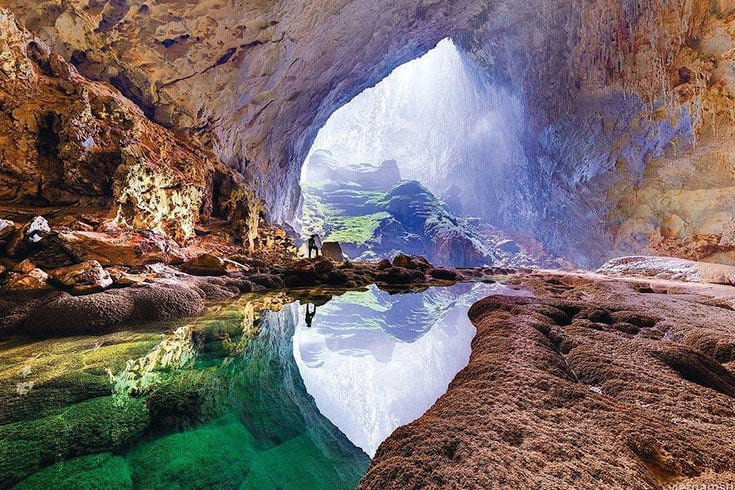 Phong Nha-Ke Bang is located in central Vietnam, near the border with Laos. The park covers an area of over 123,000 hectares and features a complex karst landscape with numerous caves and underground rivers. The park is famous for its extensive cave systems, including Phong Nha Cave, Paradise Cave, and the world’s largest cave, Son Doong. These caves are adorned with impressive stalactites and stalagmites, creating a surreal underground landscape.Phong Nha-Ke Bang is home to a diverse range of species, including many rare and endangered animals like the saola, langurs, and various bat species. The park’s dense forests and river valleys provide critical habitats for these species. Visitors to Phong Nha-Ke Bang can explore the caves, hike through the jungle, and enjoy boat trips on the Son River. The park also offers opportunities for bird watching, rock climbing, and discovering the local culture in nearby villages. 2. Cat Ba National Park
Phong Nha-Ke Bang is located in central Vietnam, near the border with Laos. The park covers an area of over 123,000 hectares and features a complex karst landscape with numerous caves and underground rivers. The park is famous for its extensive cave systems, including Phong Nha Cave, Paradise Cave, and the world’s largest cave, Son Doong. These caves are adorned with impressive stalactites and stalagmites, creating a surreal underground landscape.Phong Nha-Ke Bang is home to a diverse range of species, including many rare and endangered animals like the saola, langurs, and various bat species. The park’s dense forests and river valleys provide critical habitats for these species. Visitors to Phong Nha-Ke Bang can explore the caves, hike through the jungle, and enjoy boat trips on the Son River. The park also offers opportunities for bird watching, rock climbing, and discovering the local culture in nearby villages. 2. Cat Ba National Park
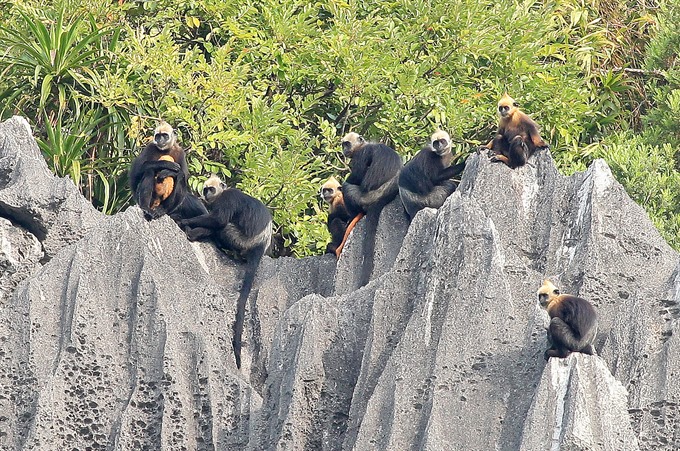 Cat Ba National Park is located on Cat Ba Island in Hai Phong City. The park covers an area of over 15,000 hectares and includes both terrestrial and marine ecosystems. This park is characterized by its rugged limestone mountains, dense forests, and diverse marine habitats. It is part of the Cat Ba Archipelago Biosphere Reserve, recognized for its ecological importance.Cat Ba is home to the critically endangered Cat Ba langur, one of the rarest primates in the world. The park also hosts a variety of other wildlife, including deer, civets, and numerous bird species. You can enjoy hiking, kayaking, and exploring the island’s caves and beaches when coming to this National Parks Vietnam. The park offers stunning views from its mountain peaks and opportunities for snorkeling and diving in its clear waters.3. Ba Be National Park
Cat Ba National Park is located on Cat Ba Island in Hai Phong City. The park covers an area of over 15,000 hectares and includes both terrestrial and marine ecosystems. This park is characterized by its rugged limestone mountains, dense forests, and diverse marine habitats. It is part of the Cat Ba Archipelago Biosphere Reserve, recognized for its ecological importance.Cat Ba is home to the critically endangered Cat Ba langur, one of the rarest primates in the world. The park also hosts a variety of other wildlife, including deer, civets, and numerous bird species. You can enjoy hiking, kayaking, and exploring the island’s caves and beaches when coming to this National Parks Vietnam. The park offers stunning views from its mountain peaks and opportunities for snorkeling and diving in its clear waters.3. Ba Be National Park
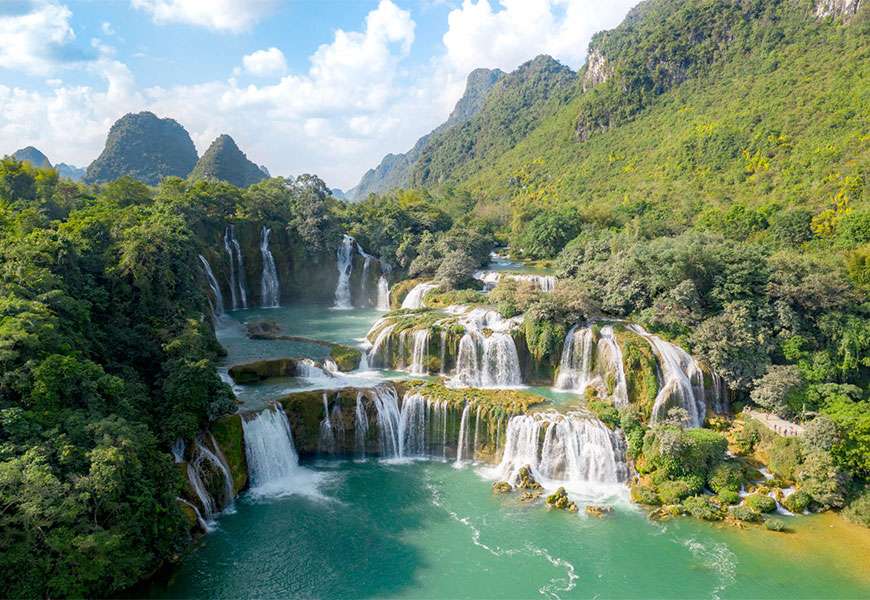 Ba Be National Park is located in Bac Kan Province, in northern Vietnam. The park is centered around Ba Be Lake, the largest natural freshwater lake in Vietnam, surrounded by limestone mountains and forests. Ba Be Lake is the highlight of the park, offering serene waters and stunning scenery. The park also features waterfalls, caves, and traditional Tay ethnic villages.
Ba Be is home to a variety of wildlife, including several species of birds, butterflies, and fish. The park’s forests support mammals like macaques, bears, and the endangered Tonkin snub-nosed monkey. Come and take boat trips on the lake, hike through the forest trails, and visit the local villages to experience the Tay culture. The park also offers opportunities for bird watching and exploring caves like Puong Cave.4. Cuc Phuong National Park
Ba Be National Park is located in Bac Kan Province, in northern Vietnam. The park is centered around Ba Be Lake, the largest natural freshwater lake in Vietnam, surrounded by limestone mountains and forests. Ba Be Lake is the highlight of the park, offering serene waters and stunning scenery. The park also features waterfalls, caves, and traditional Tay ethnic villages.
Ba Be is home to a variety of wildlife, including several species of birds, butterflies, and fish. The park’s forests support mammals like macaques, bears, and the endangered Tonkin snub-nosed monkey. Come and take boat trips on the lake, hike through the forest trails, and visit the local villages to experience the Tay culture. The park also offers opportunities for bird watching and exploring caves like Puong Cave.4. Cuc Phuong National Park
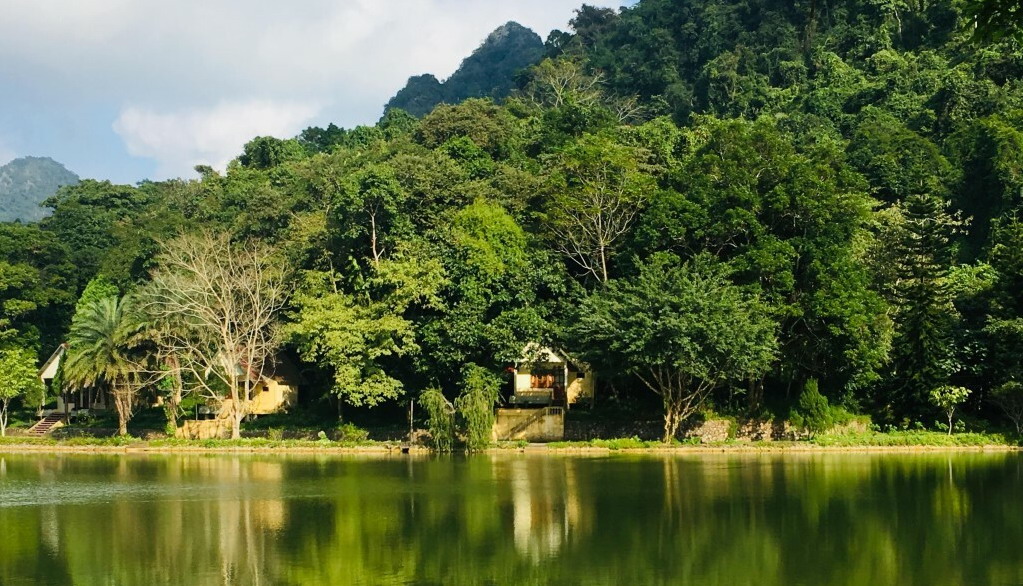 Cuc Phuong National Park is located in Ninh Binh Province, about 120 kilometers southwest of Hanoi. The park covers an area of over 22,000 hectares and features a mix of limestone mountains, valleys, and dense forests. Cuc Phuong is known for its ancient trees, some of which are over 1,000 years old. The park also has significant archaeological sites, including the Cave of Prehistoric Man, with evidence of human habitation dating back thousands of years.As a biodiversity hotspot, home to a wide variety of plant and animal species, Cuc Phuong Nation Park hosts several endangered species, including the Delacour’s langur, and is an important site for bird conservation. With numerous hiking trails, customers can also visit the Endangered Primate Rescue Center, and discover the ancient trees and cultural sites. The park also offers opportunities for bird watching and wildlife spotting.5. Bach Ma National Park
Cuc Phuong National Park is located in Ninh Binh Province, about 120 kilometers southwest of Hanoi. The park covers an area of over 22,000 hectares and features a mix of limestone mountains, valleys, and dense forests. Cuc Phuong is known for its ancient trees, some of which are over 1,000 years old. The park also has significant archaeological sites, including the Cave of Prehistoric Man, with evidence of human habitation dating back thousands of years.As a biodiversity hotspot, home to a wide variety of plant and animal species, Cuc Phuong Nation Park hosts several endangered species, including the Delacour’s langur, and is an important site for bird conservation. With numerous hiking trails, customers can also visit the Endangered Primate Rescue Center, and discover the ancient trees and cultural sites. The park also offers opportunities for bird watching and wildlife spotting.5. Bach Ma National Park
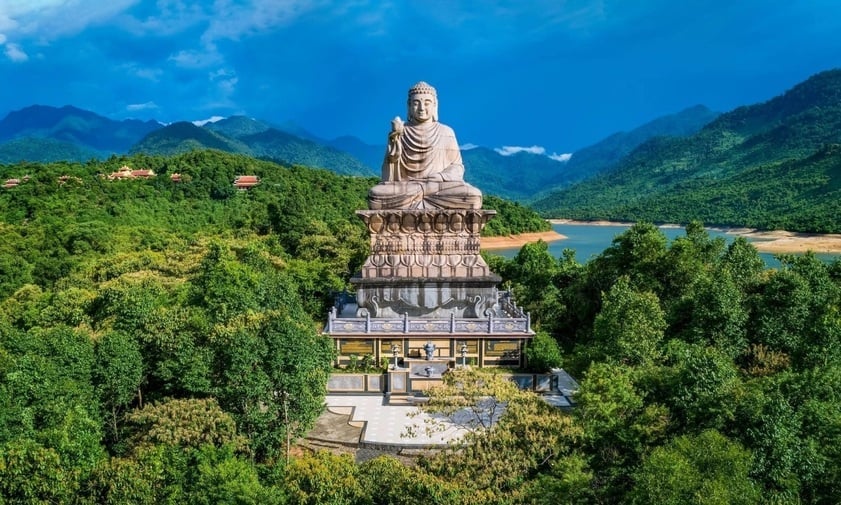 Bach Ma National Park is located in Thua Thien Hue Province, in central Vietnam. The park covers an area of over 37,000 hectares and includes a range of habitats from coastal lagoons to high mountain peaks. The park is known for its scenic beauty, featuring lush forests, waterfalls, and panoramic views from its highest peaks. It is also home to several historical French colonial buildings.Bach Ma is rich in biodiversity, with over 1,400 species of plants and 1,500 species of animals, including many rare and endangered species. The park is an important habitat for mammals, birds, and amphibians. Visitors to Bach Ma can enjoy hiking to the park’s many waterfalls, exploring its trails, and taking in the views from the summit. The park also offers opportunities for bird watching and learning about its historical sites.6. Con Dao National Park
Bach Ma National Park is located in Thua Thien Hue Province, in central Vietnam. The park covers an area of over 37,000 hectares and includes a range of habitats from coastal lagoons to high mountain peaks. The park is known for its scenic beauty, featuring lush forests, waterfalls, and panoramic views from its highest peaks. It is also home to several historical French colonial buildings.Bach Ma is rich in biodiversity, with over 1,400 species of plants and 1,500 species of animals, including many rare and endangered species. The park is an important habitat for mammals, birds, and amphibians. Visitors to Bach Ma can enjoy hiking to the park’s many waterfalls, exploring its trails, and taking in the views from the summit. The park also offers opportunities for bird watching and learning about its historical sites.6. Con Dao National Park
 Con Dao National Park is located on the Con Dao Archipelago, off the southern coast of Vietnam. The park includes both terrestrial and marine protected areas, covering a total area of over 15,000 hectares. The park is renowned for its pristine beaches, coral reefs, and nesting sites for sea turtles. It is also historically significant, with remnants of French colonial prisons.Con Dao is an important nesting site for green sea turtles and hawksbill turtles. The park’s marine environment supports a variety of coral species, fish, and marine invertebrates. Here, you can enjoy snorkeling and diving in the clear waters, watching sea turtles during nesting season, and exploring the island’s beaches and historical sites.7. Cat Tien National Park
Con Dao National Park is located on the Con Dao Archipelago, off the southern coast of Vietnam. The park includes both terrestrial and marine protected areas, covering a total area of over 15,000 hectares. The park is renowned for its pristine beaches, coral reefs, and nesting sites for sea turtles. It is also historically significant, with remnants of French colonial prisons.Con Dao is an important nesting site for green sea turtles and hawksbill turtles. The park’s marine environment supports a variety of coral species, fish, and marine invertebrates. Here, you can enjoy snorkeling and diving in the clear waters, watching sea turtles during nesting season, and exploring the island’s beaches and historical sites.7. Cat Tien National Park
.jpg) Cat Tien National Park is located in southern Vietnam, spanning the provinces of Dong Nai, Lam Dong, and Binh Phuoc. The park covers an area of over 71,000 hectares and features a mix of lowland tropical forests, wetlands, and rivers. The park is known for its rich biodiversity and significant conservation efforts. It includes the Cat Loc sector, a protected area for the critically endangered Javan rhinoceros (now extinct in the park).This park is home to a diverse range of species, including elephants, gibbons, and crocodiles. The park is also an important site for bird conservation, with over 350 bird species recorded. This park can enjoy jungle trekking, wildlife watching, and boat trips on the Dong Nai River. Visitors can book guided tours and educational programs about its conservation efforts.
Cat Tien National Park is located in southern Vietnam, spanning the provinces of Dong Nai, Lam Dong, and Binh Phuoc. The park covers an area of over 71,000 hectares and features a mix of lowland tropical forests, wetlands, and rivers. The park is known for its rich biodiversity and significant conservation efforts. It includes the Cat Loc sector, a protected area for the critically endangered Javan rhinoceros (now extinct in the park).This park is home to a diverse range of species, including elephants, gibbons, and crocodiles. The park is also an important site for bird conservation, with over 350 bird species recorded. This park can enjoy jungle trekking, wildlife watching, and boat trips on the Dong Nai River. Visitors can book guided tours and educational programs about its conservation efforts.